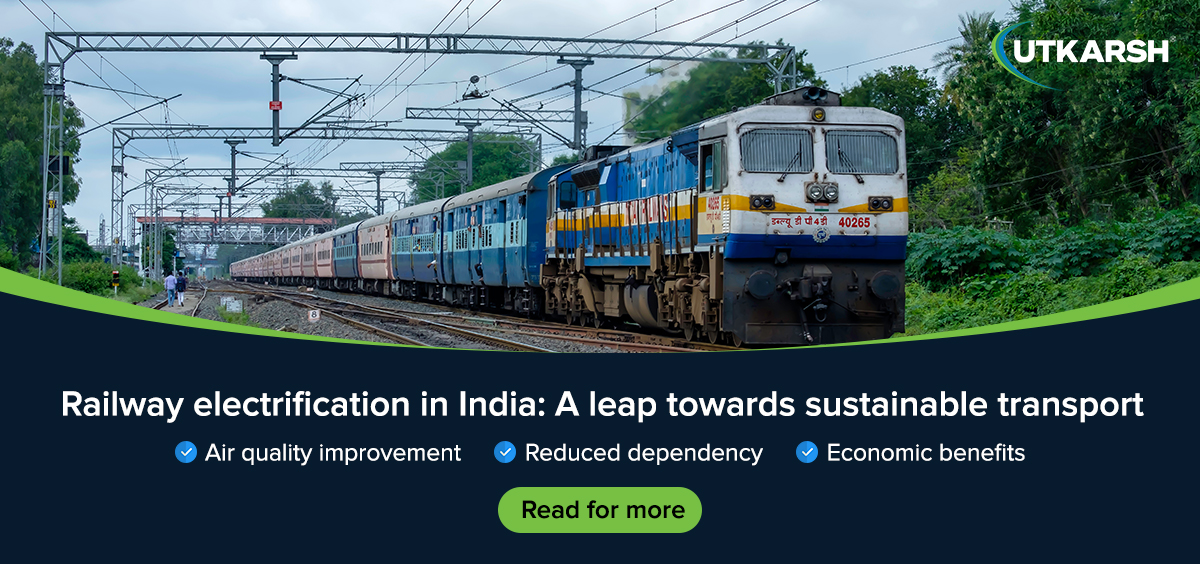Railway electrification in India: A leap towards sustainable transport

The issue of sustainability has gained immense importance in recent times. The electrification of railways in India has emerged as a significant initiative towards reducing the consumption of fossil fuels and promoting overall energy efficiency. This shift towards railway electrification holds immense promise as it can bring about substantial benefits such as the improvement of air quality through a reduction in greenhouse gas emissions. Here, we explore some of the ways in which railway electrification in India offers long-term sustainability advantages.
1. Air quality improvement:
As mentioned earlier, railway electrification offers a significant environmental advantage by reducing air pollutants linked with diesel-powered trains. Diesel combustion is known to release nitrogen oxides and other harmful particulate matter into the atmosphere, causing a decline in air quality. On the other hand , railway electrification can considerably contribute to the improvement of air quality in densely populated urban areas over time. This switch to cleaner energy can ensure a healthier and more sustainable environment for us and future generations to come
2. Reduced dependency:
In India, railways serve as a primary mode of transportation. Reducing dependence on diesel and other fossil fuels to power the entire railway network results in significantly lower levels of pollutants and greenhouse gases. It also aligns with the broader national objectives of enhancing energy security and decreasing reliance on non-renewable resources.
3. Economic benefits:
Railway electrification provides significant economic benefits to various sectors of the Indian economy. One of its primary advantages is the reduction of operational costs by decreasing reliance on diesel fuel, which is subject to volatile global oil prices. This leads to more predictable and stable budgets for the Indian Railways, allowing for better financial planning. In addition, electrification improves energy efficiency, resulting in long-term savings in electricity consumption. Furthermore, electric locomotives require less maintenance compared to their diesel counterparts, resulting in lower maintenance and repair costs.
It is important to note that the advantages of railway electrification extend beyond sustainability and energy efficiency. Electrically powered trains typically exhibit higher speeds and smoother acceleration, enhancing passenger convenience and reducing travel time.
Looking for information on railway electrification structures?
Explore our railway electrification structures. We are an approved vendor under CORE PART I certification. Our expertise encompasses the manufacturing of a wide range of structures, including specialised types, as well as the production of Galvanised ERW Steel Tubes and Counter Weight Guide Tube (RI-NO. 5063-1). We specialise in the fabrication and galvanization of steel structures tailored for OHE (Overhead Equipment) and TSS (Traction Substation Systems) applications. If you are searching online with phrases such as “OHE mast in railway”, get in touch with us.